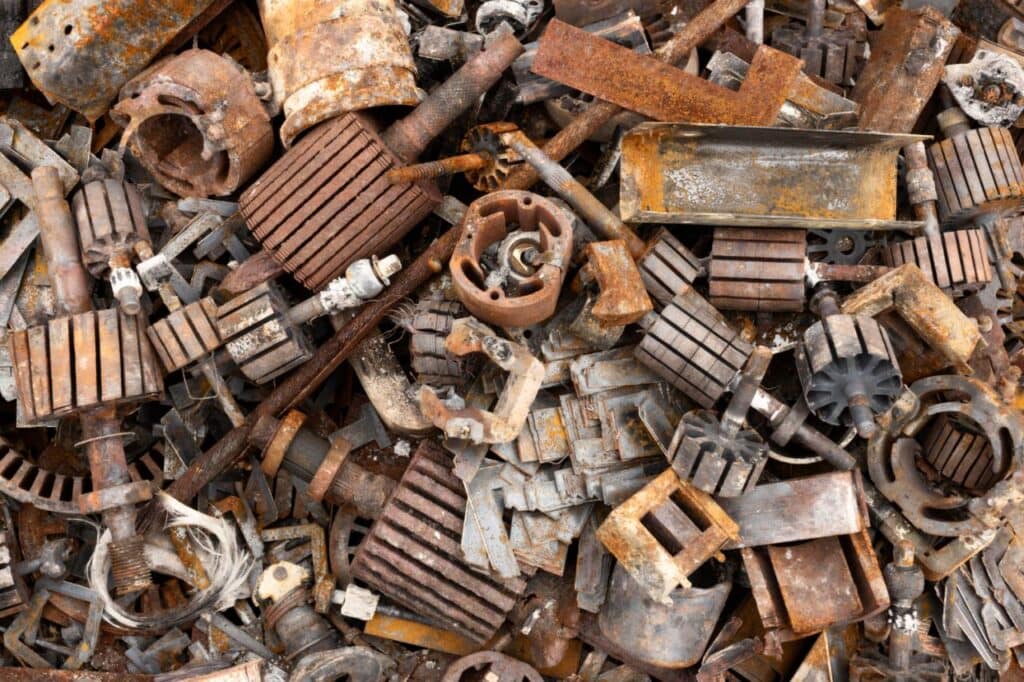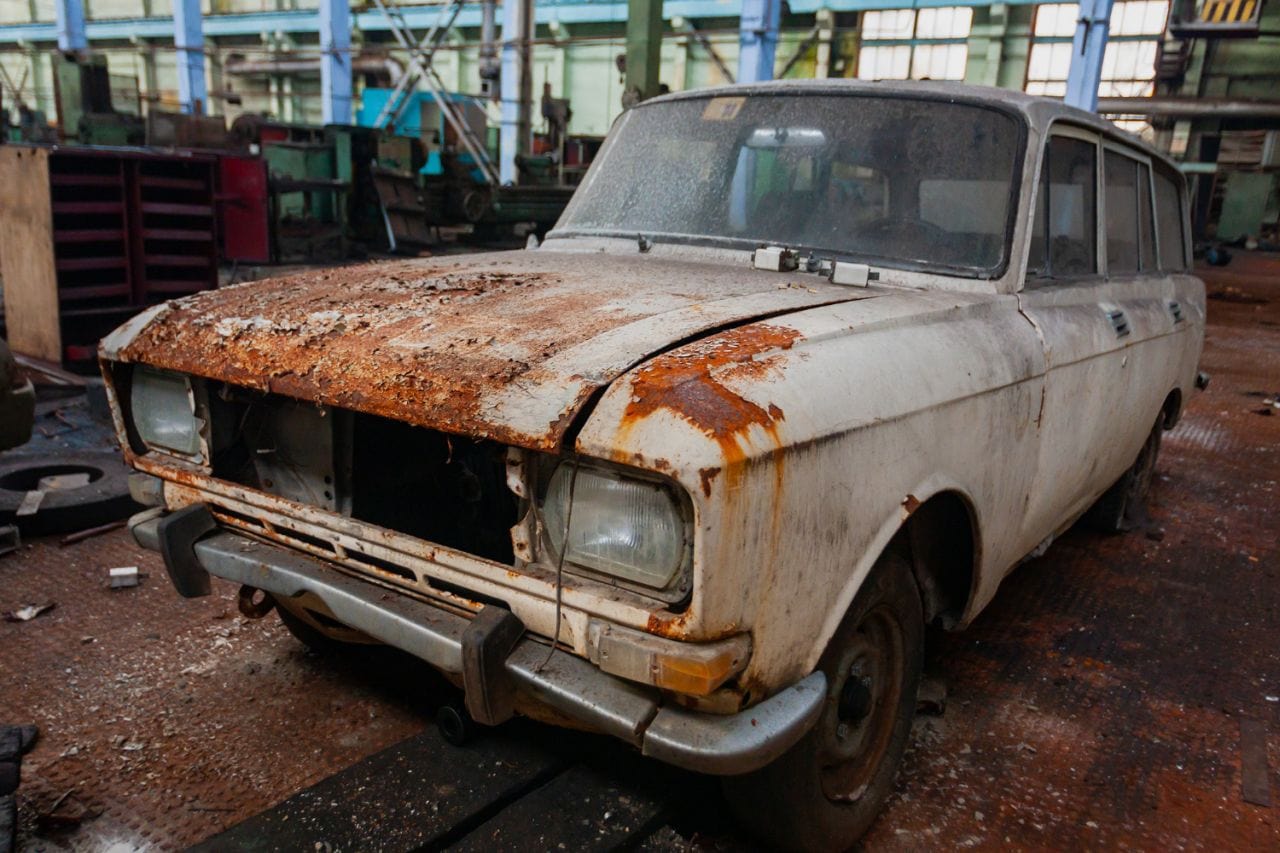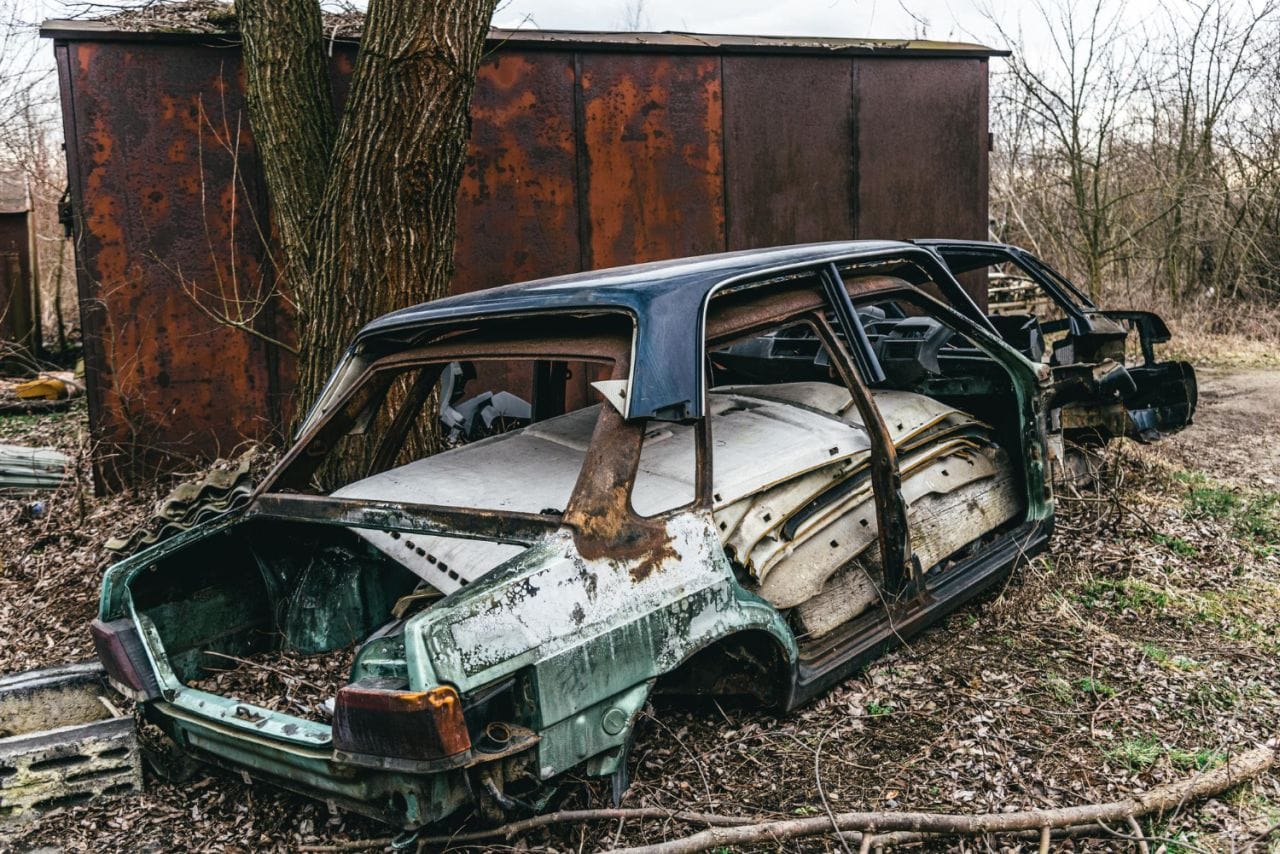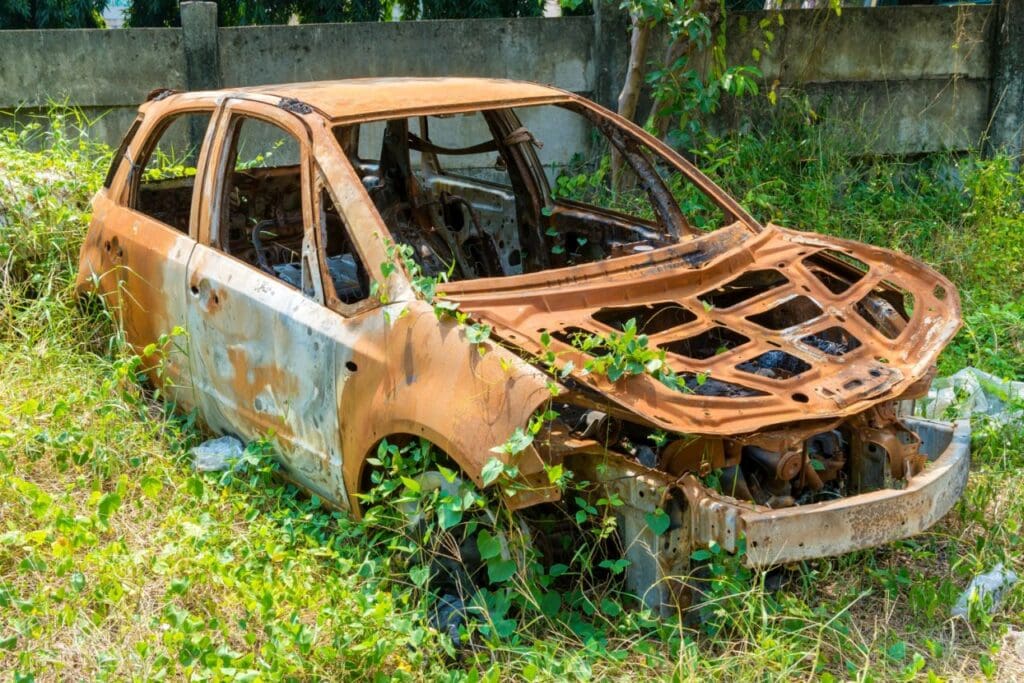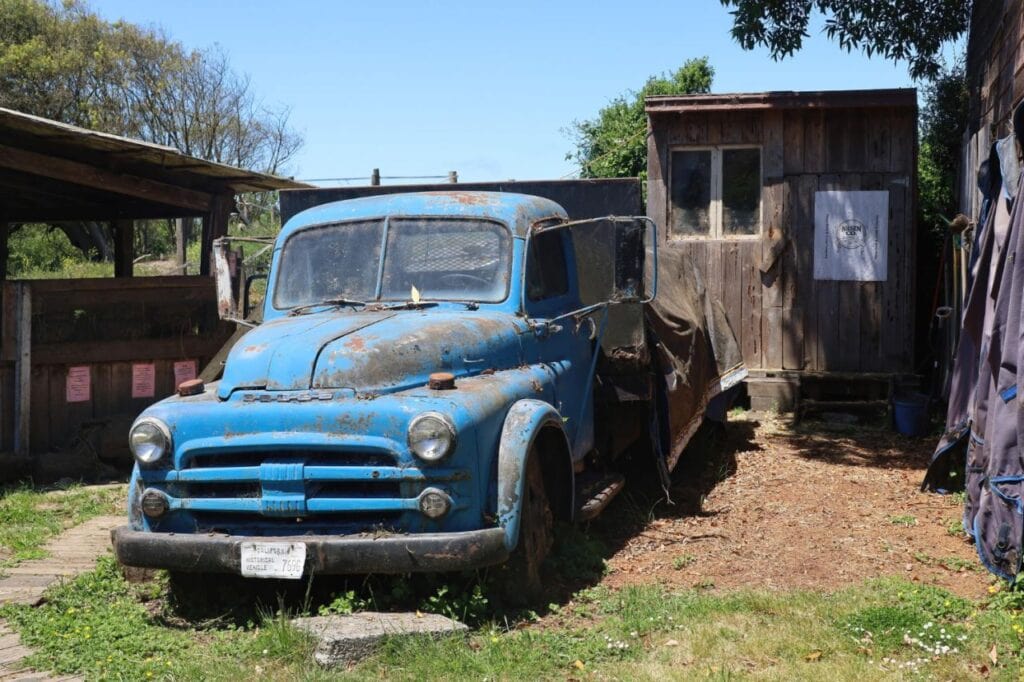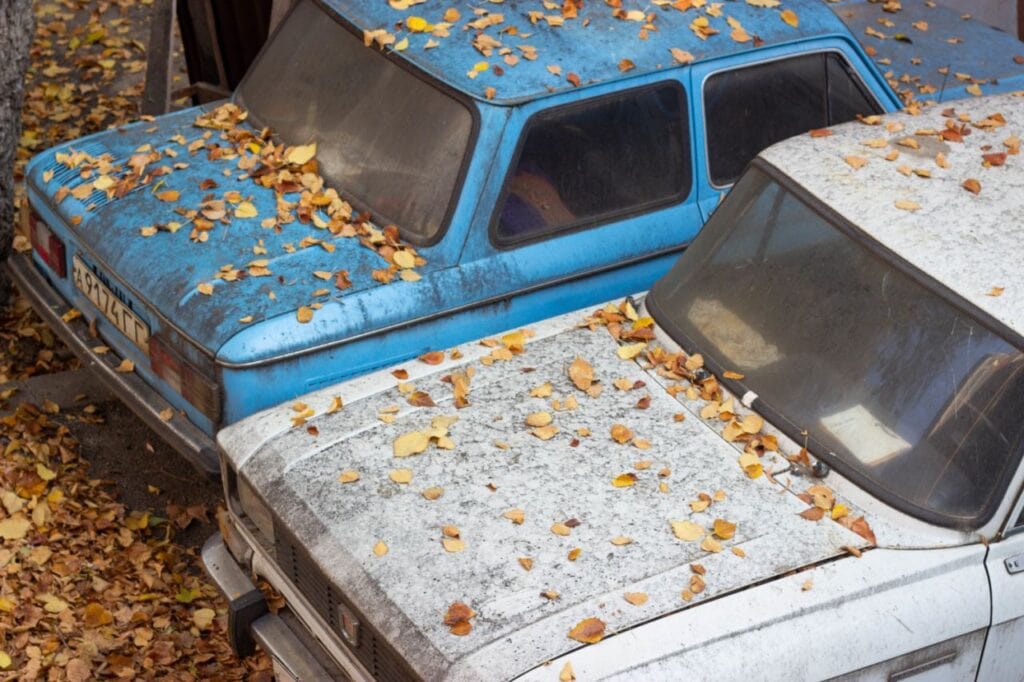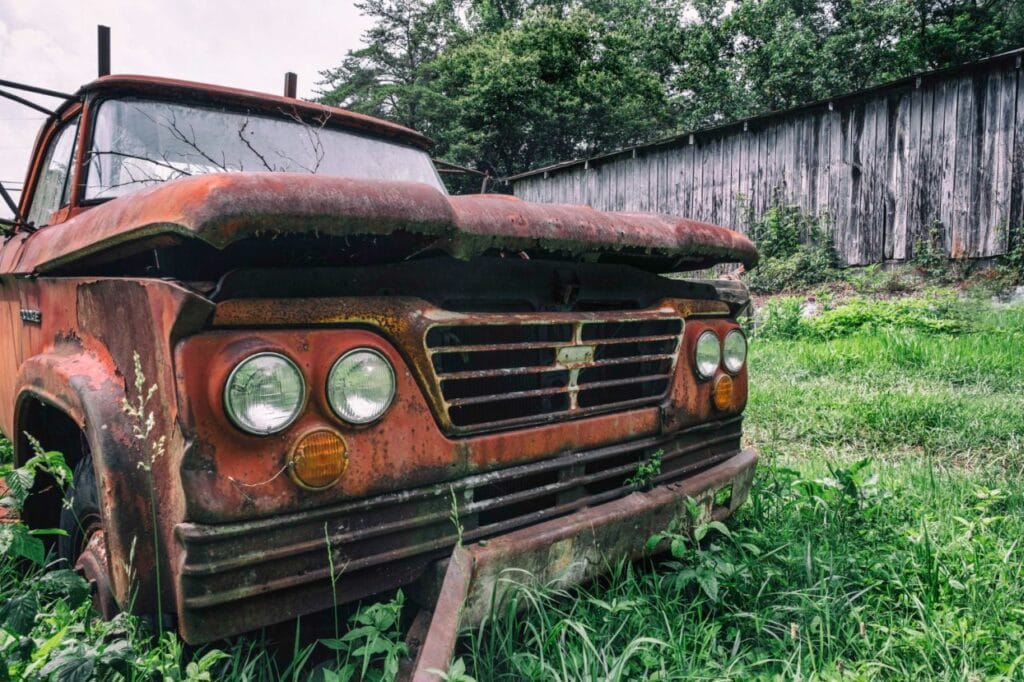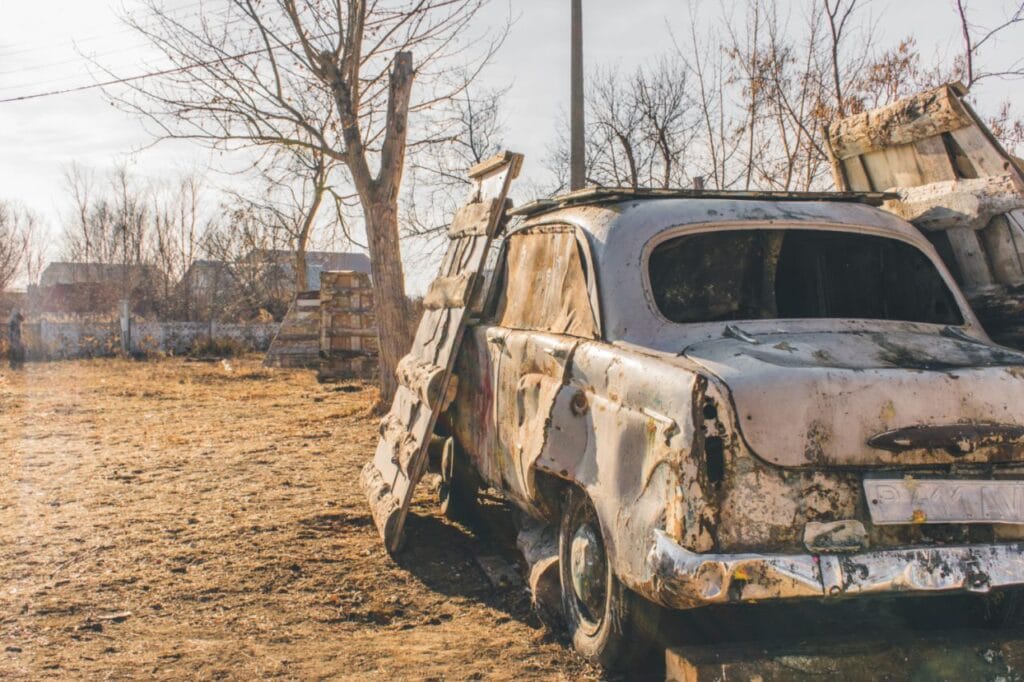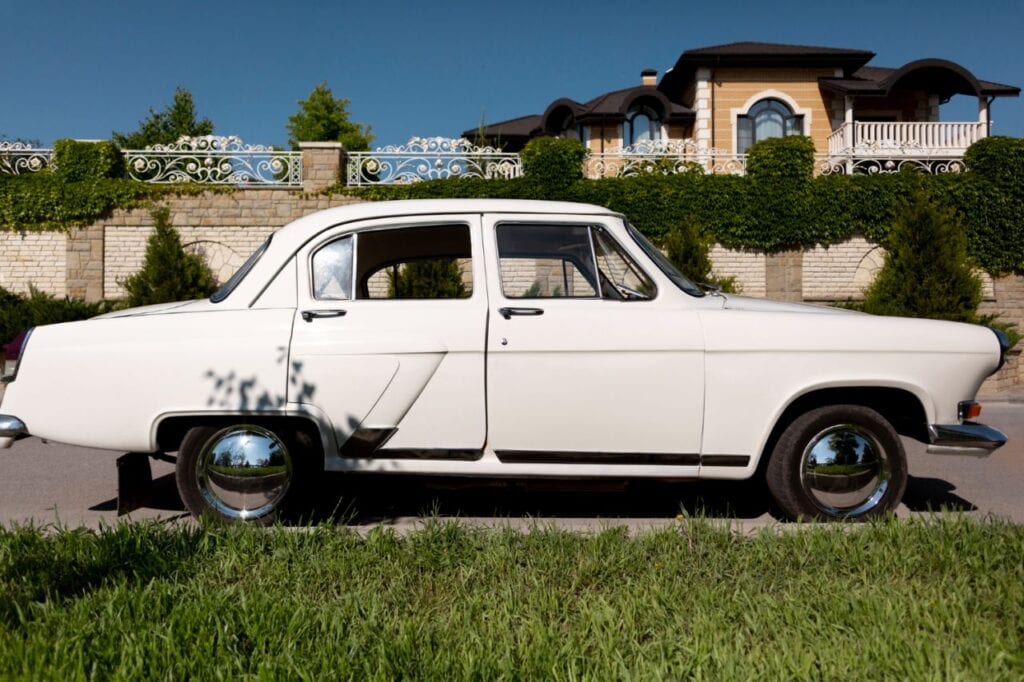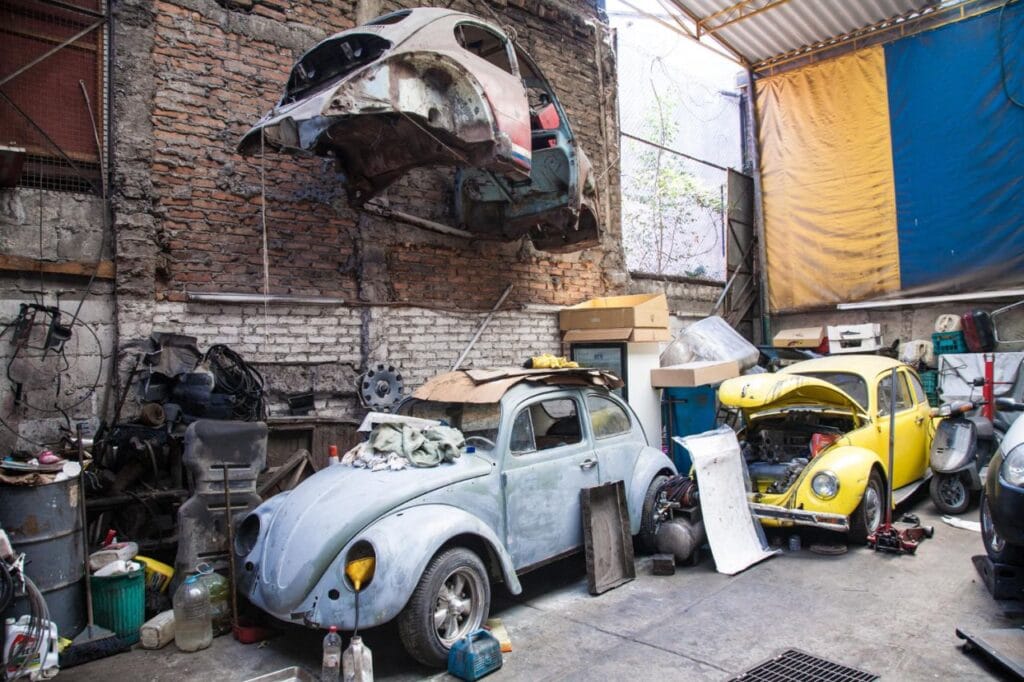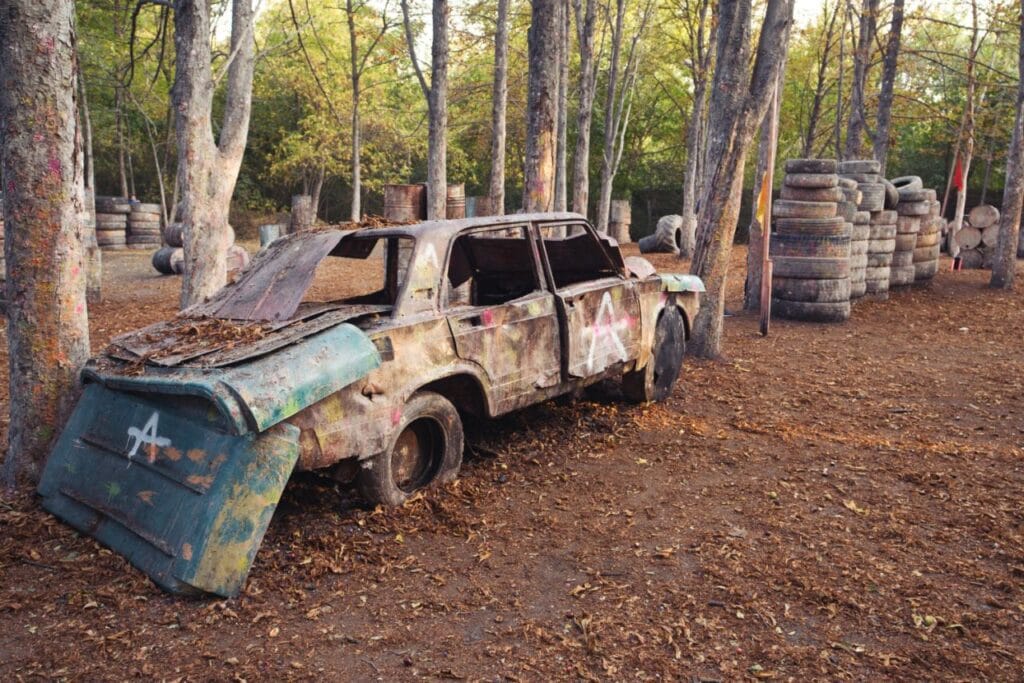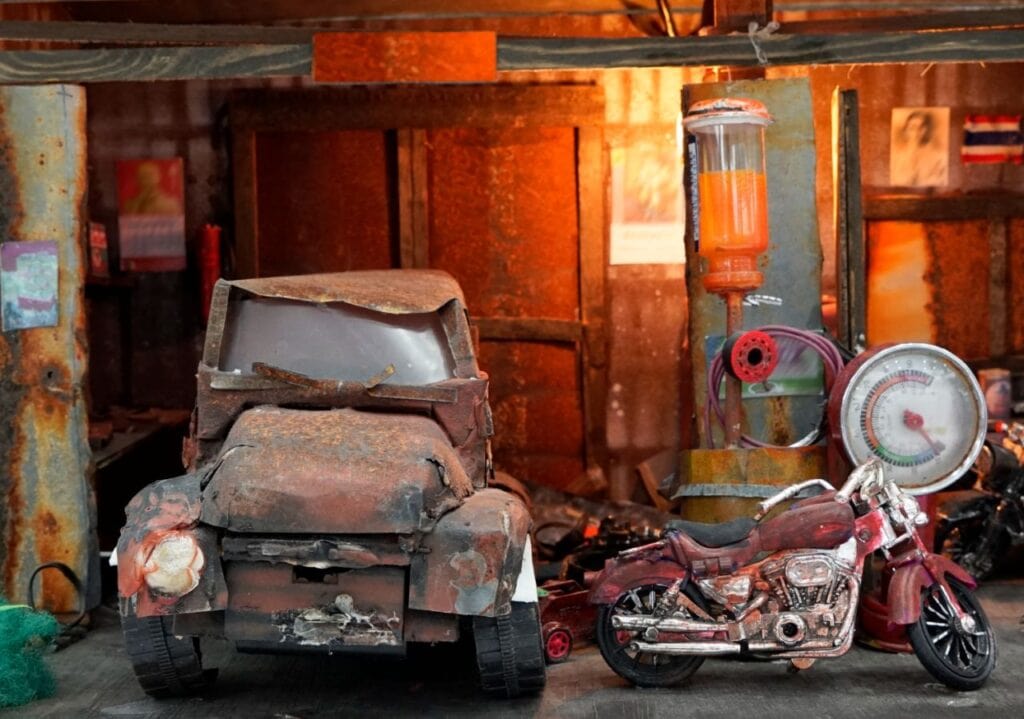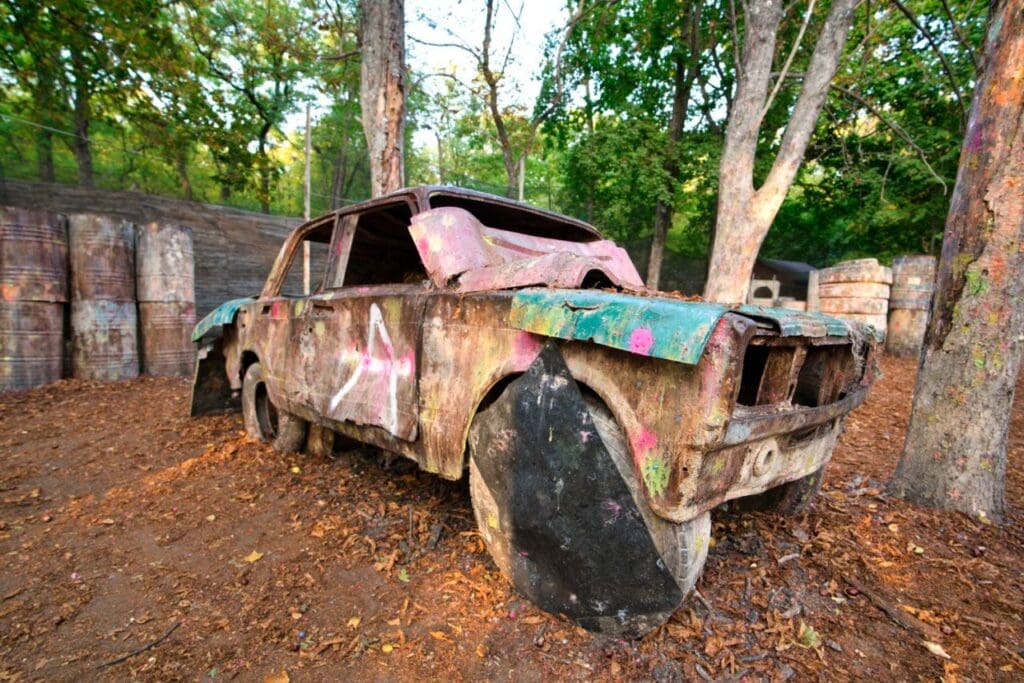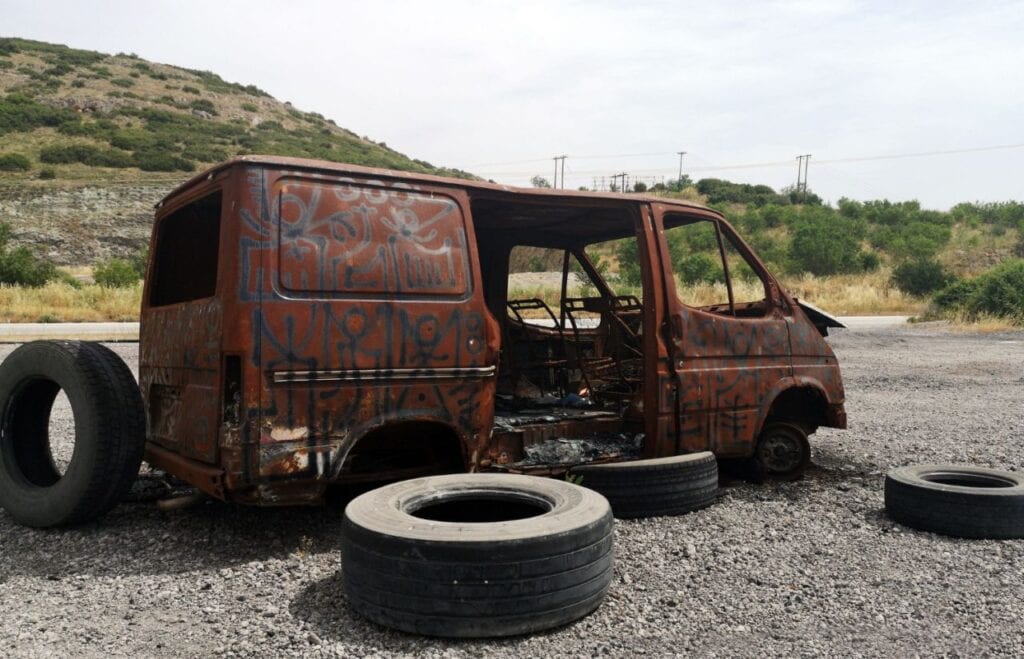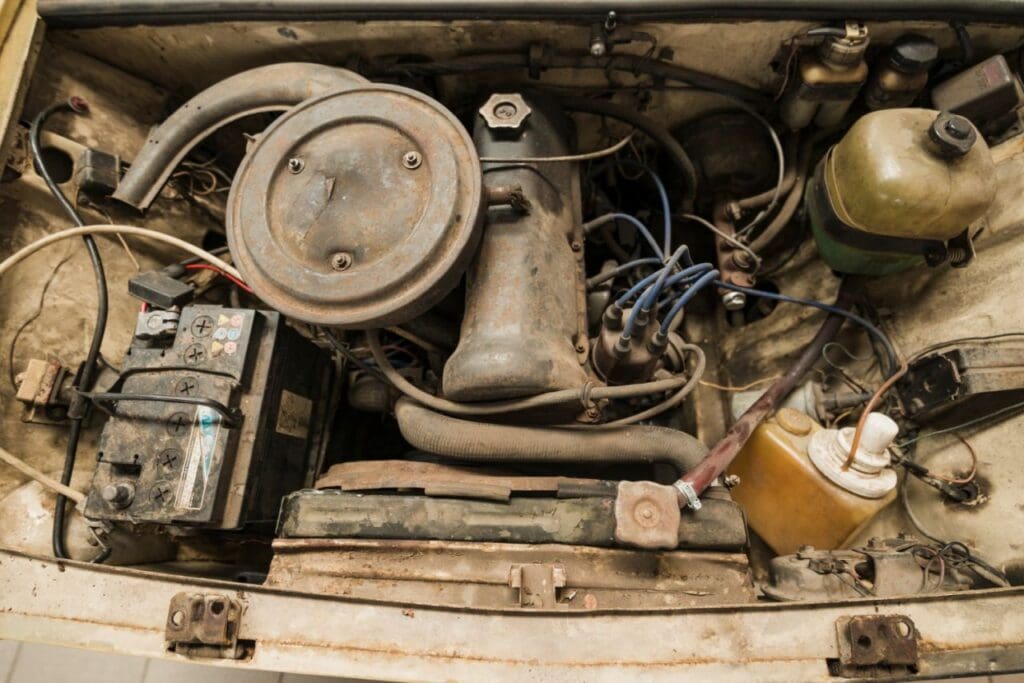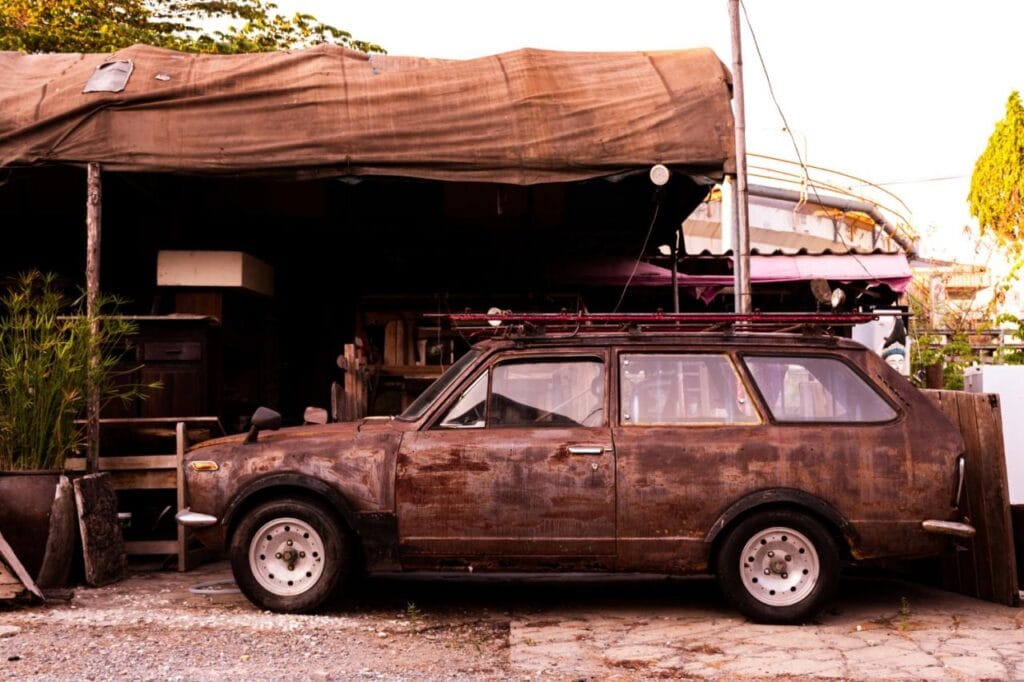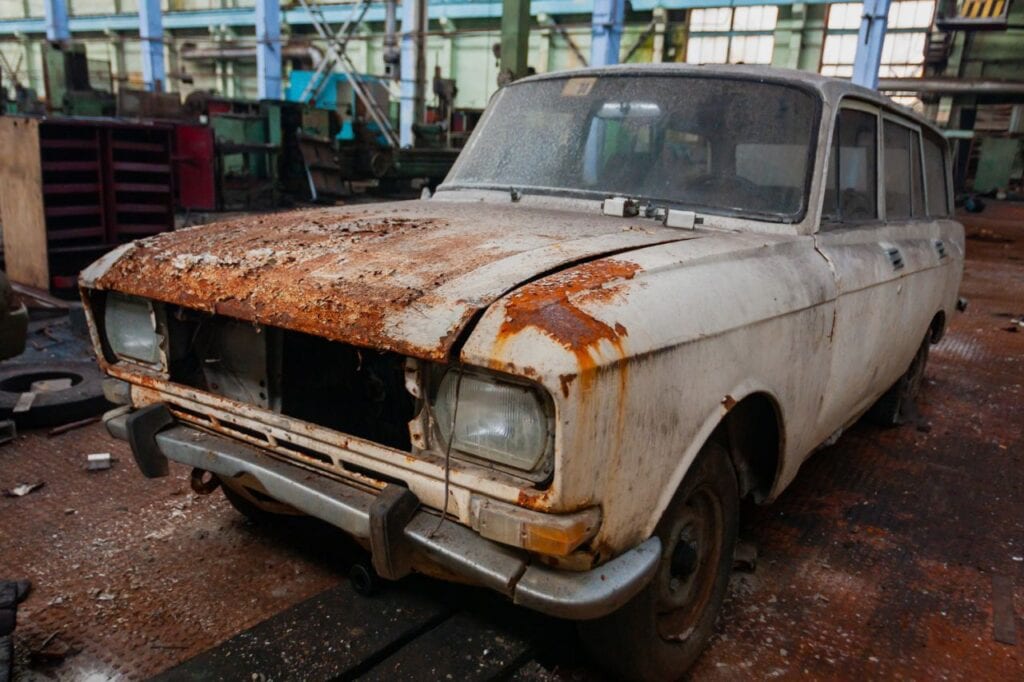Repurposing or recycling a vehicle's components can seem like a daunting task when the time comes to get rid of an old car.
First, of course, you want to know that your actions are beneficial to the planet, but There are so many choices available that it takes time to know where to begin.
This post will discuss the importance of recycling and reusing materials during vehicle disposal, as well as tips for doing so ethically and conscientiously.
We'll go over conventional approaches, like looking for scrap yards and donation programmes, and provide concrete advice on how to maximise productivity while minimising damage to the natural world.
When asked how they would get rid of an old car, most would take it to a scrap yard or junkyard where it would be crushed and the metal salvaged.
However, there are superior alternatives that benefit the planet and allow for the reuse and recycling of automobile components. This article will explain why it is critical to consider recycling and reusing car parts during car disposal.
The Importance Of Recycling Or Repurposing Car Parts When Disposing Of A Car
Due to the negative effects on the environment, people are starting to think twice about where to put their old cars.
Metals, plastics, and fluids are just some of the materials found in automobile parts, and improper disposal of these materials can have serious environmental consequences.
However, the environmental impact of vehicle disposal can be mitigated, and a more sustainable approach can be made through recycling or reusing car parts.
In addition, there may be financial and social gains from repurposing or recycling automobile components. It can help the recycling and reusing industries grow and give people who need auto parts access to low-cost options. The manufacturing process uses a lot of energy and natural resources, so if we can find new uses for old auto parts, we can cut down on those costs.
What Car Parts Can Be Recycled?
A vehicle recycler will use a thorough procedure to guarantee the safe and effective recovery and recycling of all usable parts. As part of this procedure, waste materials or fluids that can't be reused or recycled are properly disposed of.
Scrap Metal
Metal parts make up a significant portion of a vehicle's mass and can be found in a variety of places throughout the vehicle. Companies that buy scrap metal will often melt down and reuse parts like aluminium wheels, axles, handles, and other scrap metal from decommissioned vehicles.
Car Engines
There is still hope for your car's engine if it has reached the end of its useful life or has been damaged beyond repair. There are a variety of options for recycling an old engine, depending on its current state.
If your engine is completely shot, a recycling expert can salvage the metal and other valuable components to be repurposed. Aluminum's durability during the melting process makes it a valuable material for recycling.
Alternate motors are amenable to refurbishment or remanufacturing. If your old engine is still
functional, you can sell it for parts or have it reconditioned and installed in a different vehicle.
Car Tyres
When old tires are burned, they release toxic runoff and pollute the air around them. Therefore, reputable dealers will make an effort to recycle and reuse old tyres in an environmentally responsible manner. This will allow the tyres to be transformed into a variety of products, such as rubberized asphalt for use in paving and roads, as well as rubber crumb chippings for use in artificial surfaces.
Windscreen And Windows
Recycling windscreens and glass can be challenging due to the fact that these components are sometimes sandwiched between two layers of plastic.
Reusing Engine Oil
It is a common misconception that old engine oil is no longer useful. However, this is not the case. While it may get dirty, the oil in your car doesn't expire or become too old to work correctly with the engine.
Recycling Oil Filters
Used oil filters contain contaminated waste, and disposing of them requires strict adherence to regulations. But the used oil and steel parts from the filters can be recycled and reused. For example, the oil can be turned into fuel or lubricants, while the metal parts can be used to make new containers, appliances, and vehicles.
Proper Disposal of Car Batteries
Car batteries contain toxic chemicals, making their improper recovery or disposal a significant environmental concern.
Disposing of them with regular trash is illegal. Car batteries, or "wet cell batteries," must be disassembled into their components, including lead, silver, plastic, and acid, before recycling.
The acid can be neutralized, the lead melted down, and the precious components salvaged for future use.
Recycling Plastic Components
Plastic is used to make various parts of modern automobiles, such as fuel tanks, bumpers, light fixtures, handles, levers, interior trim, and dashboards. However, plastic pollution is one of the significant environmental challenges.
Mechanical or chemical recycling can be used to recycle plastic components from old cars. In mechanical recycling, the plastic is chopped, washed, and melted for reuse, while in chemical recycling, it is broken down into basic components.
Repurposing Car Parts Creatively
The time comes for every car when its components can be put to better use elsewhere, whether through recycling or some other means of reuse. Of course, it's perfectly acceptable to sell your car to a scrap yard and profit from the parts you can use, but it's even better if you can find an inventive way to deal with it. Here we've laid out the steps for you to follow.
Window And Door Handles Have A New Purpose
The one-of-a-kind design of the car's door and window pulls can be replicated in the home's furnishings. They're adaptable and have many possible applications depending on your taste and the aesthetic of your home's new design scheme. This concept is great for garage storage, boys' bedrooms, or the man cave. Detaching from the pull car door and securing it via the holes is simple.
Coffee Table With Engine
Who knew your engine could be repurposed as such a lovely coffee table? We should have thought of using an old engine by polishing it when it looked like a mirror and then mounting a square glass plane on top. A coffee table in a flash!
Paper Holders Made From Coils
Do you recognise the whirling metal coils in your vehicle? There's a great application for them; the space between the rings of the coil springs can be exploited.
Metal can be restored by cleaning and smoothing away any rust that has built up on it.
Then you can use your new automobile-themed paper holder to keep track of your mail, office files, and other documents. Papers only, please; it's metal or steel and probably old, so it's not safe to use for things like plates.
Your Catalytic Converter Will Have New Life
This component is found in all vehicles and functions as an exhaust emission control device by catalysing a redox reaction to reduce harmful gases and pollutants released by the internal combustion engine. However, when it's worn out and no longer functional, it's time to do some digging to find a reliable scrap catalytic converter value determination guide.
A reputable business that focuses on recycling catalytic converters can de-can it so that the platinum inside can be reused in other products. This includes jewellery, fountain pens, dental work, forensic staining, and decorative items. It's a good idea, and you can make a lot of money by decanting them.
Car Seats For Office Chairs
You'll agree that the driver's seat is the plushest area of the vehicle. After all, the driver will be seated here for what feels like forever (depending on the volume of traffic). So why not employ them as seating in your workplace? You may not want to leave the office once you put these on. For maximum comfort, racing car seats are what you want to invest in.
Construct A Table From A Car Ramp
Another way to repurpose automobile components is to take old car ramps and set them up so they can serve as an entryway or coffee table. After a good cleaning and coat of paint, it becomes incredibly stylish and goes wonderfully with the rest of your furniture to create the perfect rustic look for your home. This unique table, made from a recycled auto component, will be a conversation starter whenever you have guests.
Get A Squeegee With A Car Theme
If you take them off the automobile, give them a good cleaning, and attach them to a long handle or broomstick, the windscreen wipers from your old vehicle will again serve a useful role.
They could come in handy when it's time to clean the ceiling and the windows, both out of reach without them. This redesigned squeegee can be used to wipe down countertops, furniture, and more. You can give your old auto part new life by using it in the home.
The Advantages Of Recycling Or Repurposing Auto Parts
When disposing of an automobile, recycling or reusing its components can bring about various benefits, some environmental, while others are economical and social.
Economic Benefits
There may be financial gains from recycling or reusing auto parts as well. Recycling and reusing materials have the potential to boost local economies by providing new employment opportunities.
As a result, car owners who need replacement parts can turn to recycled parts, which are often less expensive than brand-new ones.
In addition, recycling or reusing auto parts can help cut down on the demand for new parts, which in turn can bring down the cost of production while conserving the natural resources and energy used during the manufacturing process.
Environmental Benefits
The negative effects of vehicle disposal on the environment can be greatly mitigated through recycling or reusing components. Metals, polymers, and fluids are some of the things that may be found in auto parts that aren't exactly eco-friendly.
Avoiding their disposal in landfills or incineration, both of which release toxic pollutants into the soil, air, and water, is one of the main benefits of recycling these components. Used auto parts can be recycled or repurposed to save materials and lessen the environmental impact of making new ones.
Social Benefits
There may also be social benefits to recycling or reusing automotive parts.
Used auto components can be repurposed into anything from one-of-a-kind artwork to practical household furnishings. As a result, people may be more likely to adopt environmentally friendly lifestyles and use their imaginations when finding new uses for old things.
Reducing trash and conserving the environment for future generations are two additional benefits of recycling or repurposing auto parts that can help foster a sense of community and social responsibility.
Conclusion
The article offers advice on how to dispose of vehicles in an ethical and responsible manner, highlighting the value of recycling and reusing auto parts. Advice on how to improve output while avoiding environmental impact is provided, as are more traditional methods like searching for scrap yards and donation programmes.
The incorrect disposal of vehicle parts, which contain metals, polymers, and fluids, can have devastating effects on the environment.
There may be financial and social benefits to be gained by repurposing or recycling automobile components, and doing so can help lessen the environmental impact of vehicle disposal. A vehicle's mass is largely comprised of metal components, which can be found all over the vehicle in a wide range of locations.
Aluminium wheels, axles, and handles, as well as other scrap metal, are frequently melted down and reused by companies who acquire scrap metal. You can do your part for the environment by recycling and reusing things like automobile batteries, plastic parts, engine oil, oil filters, car windscreens and windows, and tyres.
Batteries from automobiles cannot be thrown away in the regular trash, and their plastic parts can be reused or recycled. Modern autos rely heavily on plastic components, but plastic waste poses serious environmental problems. Plastic parts from abandoned automobiles can be recycled mechanically or chemically, and their remaining parts can be repurposed in inventive ways.
The handles on windows and doors, the motors in coffee tables, the coils used to make paper holders, and the catalytic converters are all good examples. Selling the vehicle to a scrap yard or coming up with some other ingenious solution is one approach to get car parts ready for reuse.
Finding a trustworthy junk catalytic converter value assessment guide to de-can the platinum within is crucial when getting rid of an old car.
A car ramp table can serve as an entryway or coffee table, and a squeegee in the shape of a car can be used to clean tables, desks, and other surfaces. There are a number of positive outcomes that can result from recycling or reusing automobile components.
Furthermore, recycling or reusing materials can help stimulate local economies by creating new job openings. The demand for new components can be lowered, the environmental impact of vehicle disposal lessened, and a sense of community and social responsibility promoted by recycling or reusing auto parts. It can prevent waste and reduce the harmful effects of producing new resources. Reducing garbage and protecting the environment are two social benefits.
Content Summary
- Recycling and reusing car parts can help mitigate the negative impact of vehicle disposal on the environment.
- There are financial and social gains from repurposing or recycling automobile components.
- Recyclers use a thorough procedure to guarantee the safe and effective recovery and recycling of all usable parts.
- Scrap metal parts can be melted down and reused for other purposes.
- There are various options for recycling car engines depending on their state.
- Old car tyres can be recycled and transformed into a variety of products.
- Recycling windscreens and glass can be challenging due to the fact that they are sometimes sandwiched between two layers of plastic.
- Used engine oil can still be used as it doesn't expire or become too old to work correctly with the engine.
- Used oil filters can be recycled and reused to make fuel or lubricants.
- Disposing of car batteries with regular trash is illegal, and they must be disassembled into their components before recycling.
- Plastic components can be recycled using mechanical or chemical recycling.
- Repurposing car parts can be a creative way to deal with car disposal.
- Car door and window pulls can be replicated in the home for coat hangers.
- Car seats can be repurposed as outdoor furniture.
- The seat belts can be used as guitar straps.
- Car engines can be repurposed as coffee tables.
- Old car tires can be used as garden borders or for swings and other outdoor play equipment.
- Car doors can be used to create outdoor benches.
- Car hoods can be repurposed as pool tables.
- The exhaust pipe can be transformed into a unique floor lamp.
- Car rims can be turned into modern-looking outdoor fire pits.
- Car air filters can be repurposed as industrial-looking pendant lights.
- Car carpets can be turned into attractive doormats.
- Old license plates can be used to create unique home decor.
- Steering wheels can be used to create unique clock designs.
- The suspension springs can be repurposed as unique candleholders.
- Car radiators can be turned into stylish wine racks.
- The car’s rearview mirror can be used to create unique photo frames.
- The car's transmission can be used to make an interesting floor lamp.
- Old headlights can be turned into unique table lamps.
Frequently Asked Questions about Used Cars
Recycled car parts refer to used or salvaged components from previously used vehicles, which are then collected, processed, and made available for reuse in other vehicles as replacement parts.
Not all car parts can be recycled or repurposed. While many car parts, such as engine and transmission parts, body and exterior parts, and interior parts, can be recycled or repurposed, some parts may be challenging to recycle or repurpose due to their composition or condition.
Recycled car parts can be of good quality, depending on their condition and the recycling process. Reputable recycling facilities follow strict quality control measures to ensure that recycled car parts are in good condition and fit for reuse.
However, it is essential to source recycled car parts from reliable sources to ensure their quality and compatibility with your vehicle.
Car parts can be repurposed in various ways, depending on their condition and composition. For example, old engine blocks can be turned into furniture or decorative items. Body and exterior parts can be repurposed into artistic installations or functional objects.
Interior parts can be transformed into unique home decor or repurposed for other creative uses. The possibilities are endless, requiring creativity and innovation to repurpose car parts effectively.
Both recycling and repurposing car parts can be environmentally friendly, as they help reduce the environmental impact of car disposal. Recycling car parts involves processing them to extract valuable materials for reuse in manufacturing new products, which conserves resources and reduces the demand for new materials.

